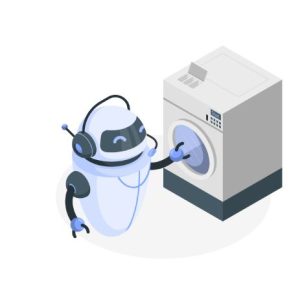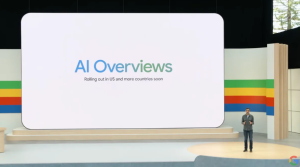Generative AI refers to artificial intelligence systems that generate new content rather than simply analyzing existing data. This can include generating text, images, audio, video, code and more. Generative AI models use machine learning techniques like deep learning to analyze massive datasets and learn patterns, which allows them to generate brand-new content that is similar but not identical to their training data.
While early generative AI systems were limited, recent advances have led to models capable of generating incredibly realistic and coherent content across a variety of domains. The growing capabilities and adoption of generative AI are driving a revolution in how content is created and consumed, with major implications for creative industries, automation, and scientific research.
Skale Money Key Takeaways
- Generative AI systems can create new content across various mediums, including text, images, audio, and code.
- Major applications include content creation, customer service, data analysis, and creative inspiration.
- Leading companies in the field include OpenAI, Anthropic, Google, and other tech giants.
- Generative AI has the potential to disrupt creative industries, automate knowledge work, and accelerate scientific discovery.
- While powerful, generative AI faces challenges such as potential biases, intellectual property concerns, and the need for trustworthy systems.
Table of Contents
Major Types of Generative AI Models
Text Generation
Models like GPT-4 and ChatGPT, developed by companies like Anthropic and OpenAI, generate human-like text on almost any topic, including articles, stories, scripts, and even computer code.
These large language models are trained on vast datasets of online text to learn patterns and coherent ways of communicating information.
Image Generation
AI systems like DALL-E, Stable Diffusion, and Midjourney have made it possible to generate unique, realistic images from text descriptions alone. By analyzing millions of images and their associated captions, these models learn to understand the relationship between text and visual concepts.
Users can then describe any kind of image they want, and the AI will attempt to render it.
Audio/Video Generation
While still an emerging area, there are now generative AI models that can create artificial audio clips like music or speech, as well as generating video footage. These systems work by learning patterns from existing audio and video data.
Code Generation
AI assistants can now help developers by generating software code in various programming languages based on natural language descriptions or examples provided. This potentially increases productivity for coders.
Current Applications of Generative AI
Content Creation
One of the most prominent and disruptive applications of generative AI is in content creation across fields like writing, art, and music/audio production. AI writing assistants generate blog posts, stories, scripts, and marketing copy in seconds based on prompts.
Image generators are being used by artists and designers to rapidly visualize ideas. Musicians are starting to experiment with AI-generated vocals, instrumentals, and entire songs.
Customer Service
Conversational AI assistants powered by generative language models can understand customer queries and generate personalized, human-like responses to help resolve issues in real-time. This improves customer service efficiency and reduces wait times.
Data Analysis and Research
By processing and analyzing large datasets, generative AI can surface insights, generate reports and data visualizations to assist researchers, analysts and business intelligence teams. AI may also accelerate scientific discovery by generating hypotheses and assisting with experiment design.
Creative Inspiration & Ideation
While not replacing the human creative process entirely, generative AI can be used as a co-creative partner by artists, writers, innovators and product teams to rapidly generate ideas, concepts and drafts.
Potential Future Impact of Generative AI
As generative AI capabilities continue advancing rapidly, the technology has the potential for truly transformative impacts:
Disrupting Creative Industries
Many roles and professions in creative fields like art, design, writing, music and entertainment production could face major disruption as AI automates more content generation tasks. There may need to be a shift in how human creativity is valued.
Automating Knowledge Work
Generative AI assistants, leveraging large language models and multimodal abilities, may be able to automate many knowledge worker tasks like research, analysis, reporting, coding and project management. This could increase productivity but also lead to workforce shifts.
Accelerating Scientific Discovery
If generative AI systems achieve advanced reasoning capabilities, they could potentially aid in rapid hypothesis generation, experimental design, and data interpretation – accelerating the pace of scientific breakthroughs across fields like medicine, energy and materials science.
While tremendously powerful, the ethics and potential negative impacts of generative AI must also be carefully considered, such as perpetuating harmful biases, enabling misinformation and fraud, and raising intellectual property concerns around ownership of AI-generated content.
Major Companies/Players in Generative AI
OpenAI, a leading artificial intelligence research company, kicked off the generative AI revolution with powerful models like GPT-3 for text generation and DALL-E for image generation. Their release of GPT4o has further demonstrated the capabilities of large language models.
Anthropic is another AI research company at the forefront, developing advanced language models like Claude that aim to be safe and ethical, while still exhibiting high performance across many tasks.
Big tech giants like Google, Meta (Facebook), Microsoft and Amazon are also pouring massive investments into generative AI research and product development. For example, Google has introduced AI Overviews in search and has models like Imagen for image generation and the LaMDA language model.
While some leaders are emerging, the generative AI landscape is still rapidly evolving with many startups building innovative applications using models like GPT-3, Stable Diffusion, and other open-source releases.
We may see increasing competition and an “AI arms race” as companies vie for talent and compute resources. Open collaboration frameworks like Anthropic’s Constitutional AI may also shape generative AI’s development to be more transparent and aligned with societal interests.
Generative AI Use Cases and Examples
Example use cases demonstrating generative AI’s potential:
- Generating photorealistic marketing visuals and product imagery
- Automating drafts of news articles, reports, stories from data/prompts
- Creating personalized messages at scale for sales/marketing
- Assisting drug research by generating molecule designs
- “Mind-expanding” tools providing on-demand writing/creative inspiration
- Personal assistants handling tasks like scheduling, analysis, coding
Generative AI Tools and Resources
Some of the most widely-used generative AI tools and platforms available today include:
- OpenAI Playground – Generate text/images with GPT-3, DALL-E
- Anthropic’s Claude – Chat-based AI assistant
- DALL-E and Midjourney – Leading image generation tools
- GitHub Co-pilot – AI coding assistance in development environments
Many companies offer APIs to build apps on top of their models. Learning resources include courses on machine learning, prompt engineering, and responsible AI development.
Challenges and Limitations
While groundbreaking, generative AI still faces key limitations:
- Potential to generate biased, inconsistent or low-quality outputs
- Lack of true reasoning, common sense or context understanding
- Compute power/cost requirements restrict model sizes
- Intellectual property concerns around ownership of generated content
- AI security risks like encoded biases, misinformation campaigns
- Building trustworthy and robust generative AI systems that behave reliably, while mitigating societal risks, remains an ongoing challenge.
The Future of Generative AI
The generative AI revolution has only just begun. We can expect rapid progress in areas like:
- Multimodal models: Systems able to seamlessly work across different data types like text, images, audio/video simultaneously. This will enable entirely new AI experiences.
- Common sense reasoning: Models exhibiting deeper contextual understanding, logical reasoning and general intelligence for more coherent outputs.
- Controllable generation: Giving users fine-tuned control over AI generators to better customize and steer the content created.
- Democratizing AI: Increasing access to generative AI capabilities, not just for major tech companies but individual creators/developers through APIs and open tools.
As generative AI integrates into our technological infrastructure, it will likely become ubiquitous yet mostly operating “behind the scenes” – powering virtual assistants, creative workflows, business automation and more. Generative AI may one day be as omnipresent as the internet itself.
Getting Started with Generative AI
For those interested in leveraging generative AI’s potential, some tips for getting started:
- Experiment with free/consumer tools like ChatGPT to get a feel for generative AI capabilities
- Learn fundamentals of machine learning, models, data and prompt engineering
- Consider potential opportunities and threats from generative AI in your industry
- Develop hybrid skills to collaborate with AI as an “augmented workforce”
- Stay updated on the latest advancements in this fast-moving field
With the right skills and understanding, generative AI will be a powerful co-pilot.
FAQ
What is generative AI?
Generative AI refers to artificial intelligence systems that create new content, such as text, images, audio, or code, rather than simply analyzing existing data.
How does generative AI work?
Generative AI models use machine learning techniques like deep learning to analyze large datasets, learn patterns, and generate new content based on those patterns.
What are some popular generative AI tools?
Popular tools include OpenAI’s GPT models and DALL-E, Anthropic’s Claude, Midjourney for image generation, and GitHub Copilot for coding assistance.
What are the potential impacts of generative AI on various industries?
Generative AI could disrupt creative industries, automate knowledge work, accelerate scientific discovery, and transform content creation processes across many fields.
What are some challenges facing generative AI?
Challenges include potential biases in outputs, intellectual property concerns, high computational requirements, and the need to build trustworthy and robust systems.
![]()




